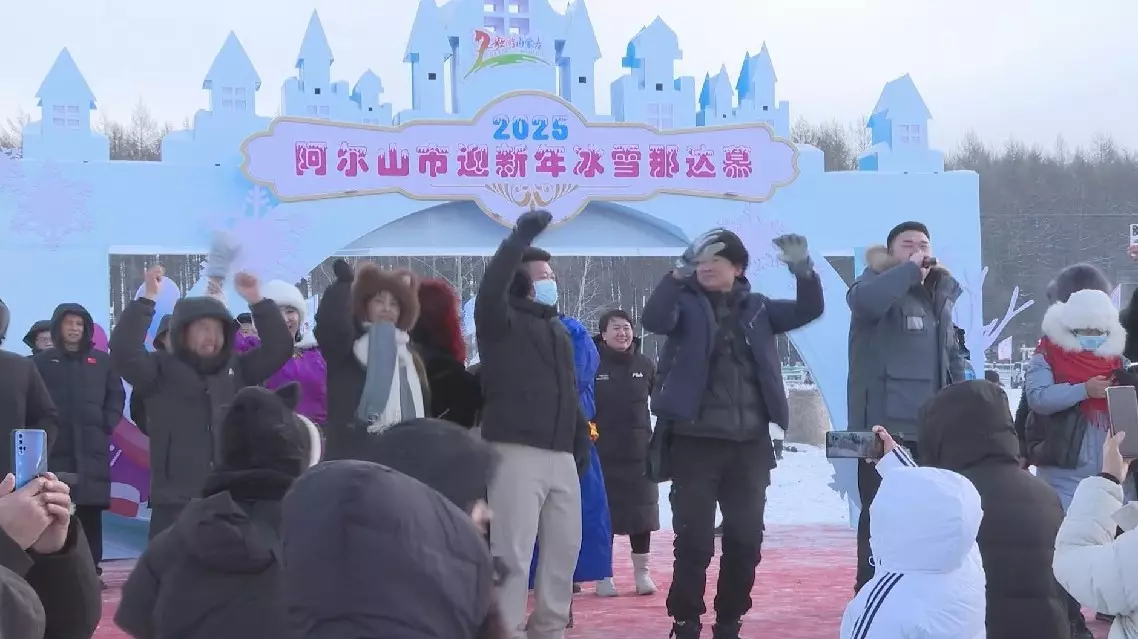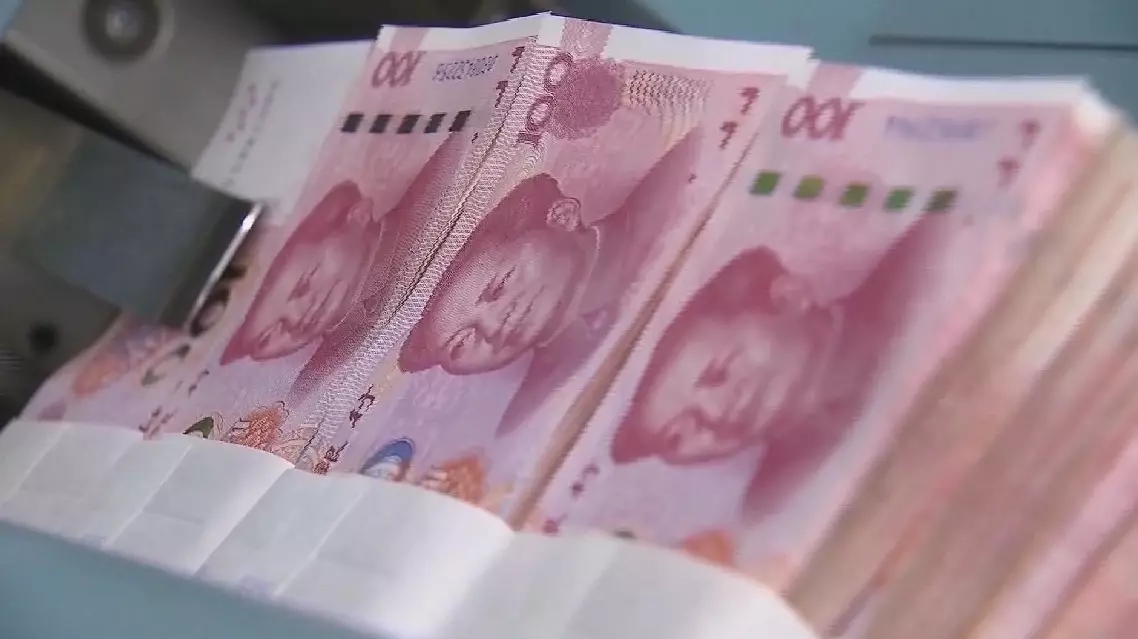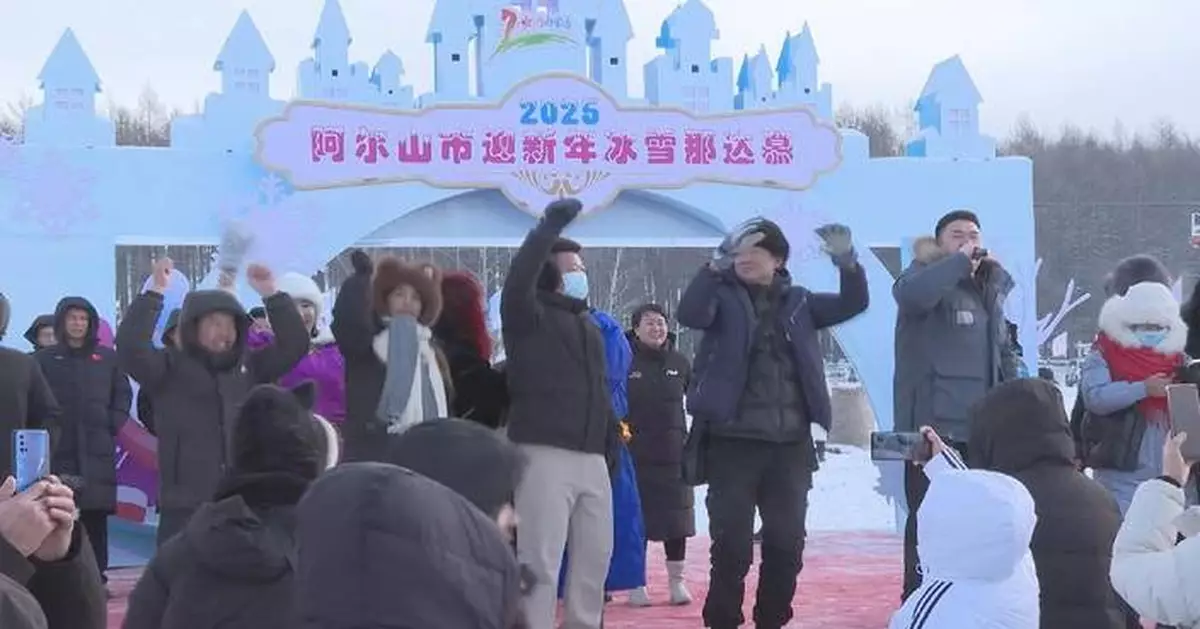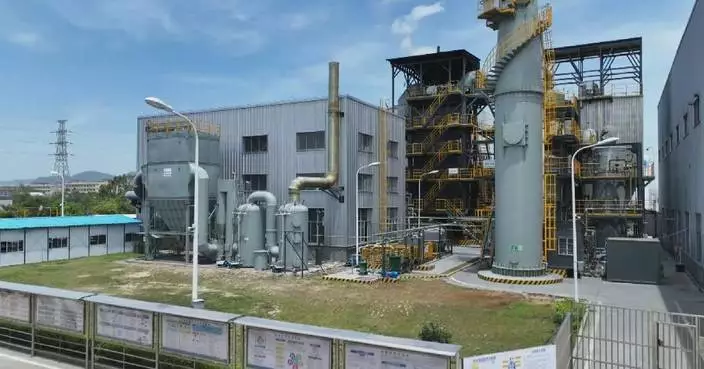The remote city of Arxan in north China's Inner Mongolia Autonomous Region is reaping the benefits of a surge in winter tourism, standing out as an alternative to other popular destinations, as the country is experiencing another boom in ice and snow themed travel.
The name of the city, Haren Arxan, means "hot holy water" in the Mongolian language. Located on China's border with Mongolia, Arxan boasts a stretch of the Khalkha River that runs non-freezing due to the heat from an active volcanic cluster in the region, which also feeds the city's famous hot springs.
Discerning tourists have taken on a journey to this more secluded destination, where stunning winter scenery and a variety of ice and snow events are offered along with the relaxing mineral-rich thermal baths.
"Because my son has seen so many snow videos on his phone, he asked me, 'Can we go play in the snow?' To be honest, some of these places are either too crowded or overpriced. Arxan offers more bang for the buck," said Li Chunyan, a tourist from east China's Zhejiang Province.
Arxan's abundant natural resources once made it a logging hub. But since China shifted to forest preservation in the 1990s, the town's focus turned to tourism.
Local government official Sun Hailong has witnessed Arxan's transformation over the past 25 years. From desolate beginnings, the town saw roads paved and an airport built.
Last year, Arxan recorded more than 5 million tourist visits, but most of them were received during the summer. The government has now set a goal of attracting more winter tourists.
Significant investments are being made to boost tourism in Arxan. Last year, the equivalent of over 2 million U.S. dollars of government funding was spent on tourism projects, a staggering amount given the city's GDP amounts to just over 3 million dollars. This extraordinary commitment shows the local government's confidence in tourism as a cornerstone of its future.
"We welcome everyone around the world to come and see this winter wonderland," Sun said in an invitation to the audience via China Global Television Network (CGTN).

Exploring natural wonders of Arxan in north China's Inner Mongolia
A raft of financial measures announced by China on Wednesday, such as interest rate cuts, reserve requirement ratio (RRR) reductions, and structural policies, are designed to stabilize markets, stimulate investment, and support key sectors such as real estate and foreign trade, said Tian Xuan, director of the National Institute of Financial Research at Tsinghua University.
The newly introduced policies, unveiled during a press briefing by Pan Gongsheng, governor of the People's Bank of China, the central bank, Li Yunze, head of the National Financial Regulatory Bureau, and Wu Qing, chairman of the China Securities Regulatory Commission, include a range of quantitative, price-based, and structural measures.
The most significant of these measures is a 0.5 percentage point cut in the reserve requirement ratio (RRR), which is expected to inject 1 trillion yuan (over 134 billion U.S. dollars) in long-term liquidity into the market. Additionally, the RRR for auto finance and financial leasing companies will be reduced from 5 percent to 0.
Along with the RRR reduction, the central bank has also cut interest rates, including for re-lending to commercial banks and housing provident fund loans. In an interview with the China Central Television (CCTV) on Wednesday night, Tian made a detailed analysis of the policy package, emphasizing the significant impact of the interest rate cuts and liquidity injections on stabilizing the markets and economic expectations.
"These new measures have a significant impact. We've seen a 50-basis-point reduction in the reserve requirement ratio, which will release 1 trillion yuan in medium- and long-term funds into the market, injecting much-needed liquidity to ease some of the market's anxiety. In addition, the policy interest rate was cut by 10 basis points. However, it's not just the policy interest rate that has been adjusted. and the interest rates of several structural monetary policies have also been cut. For example, the interest rate for re-lending to support agriculture and small businesses has been reduced by 25 basis points, as has the interest rate for personal housing provident fund loans. These rate cuts will play a pivotal role in lowering both corporate borrowing costs and personal financing expenses, which will, in turn, stimulate business investment demand and boost consumption. It will also help support the steady recovery of the economy's core fundamentals," Tian explained.
One of the most highly anticipated policy changes was the reduction in housing provident fund loan rates. Tian elaborated on how these measures will benefit homebuyers.
"This actually represents a significant saving. The interest rate for personal housing provident fund loans has been reduced by 25 basis points. For instance, if we take a 1-million-yuan mortgage over 30 years, the total interest savings would be nearly 50,000 yuan. When we add it up, the total annual interest savings across the market could reach at least 20 billion yuan. These savings will allow individuals to boost consumption, which will help stimulate consumer demand. At the same time, it will also effectively address people's essential housing needs, contributing to stabilizing and recovering the real estate market," Tian said.
The policy package also includes crucial measures to support the capital market. Tian praised the optimization of two key structural monetary policies, merging separate initiatives into an 800-billion-yuan package (about 111 billion U.S. dollars).
"These two structural monetary policies will play a crucial role in supporting the capital market. This time, the optimization combines the previously separate 500 billion yuan allocated for swap facilities and 300 billion yuan for stock repurchase and new issuance re-loans into a single 800-billion-yuan package. The decision sends a clear and strong signal to the market: it is a long-term policy aimed at ensuring the stable and sustained development of the capital market. Moreover, these two policies have a powerful counter-cyclical adjustment effect, acting as a safeguard for the market. The optimization also enables various types of financial institutions to better meet their diverse needs, improve their access to capital, and strengthen their ability to increase stock holdings. Additionally, this adjustment will significantly enhance the convenience and flexibility of these tools. As a result, it is a vital measure for ensuring the long-term stability and healthy development of the capital market," said Tian.
Tian also talked about the support for small and micro foreign trade enterprises, which have been severely affected by the ongoing trade war and tariff tensions triggered by the U.S. abuse of tariffs.
"We actually have a variety of tools to assist foreign trade enterprises that are being impacted. From a banking perspective, one option is loan extensions, which means that if their loans are due, we can extend the repayment period. Additionally, we can offer interest rate reductions. If local governments have the financial capacity, they can also provide tax relief policies to help small and micro foreign trade enterprises navigate these challenges and continue their development," Tian concluded.

China's sweeping financial measures aim to boost growth, stabilize markets: scholar











